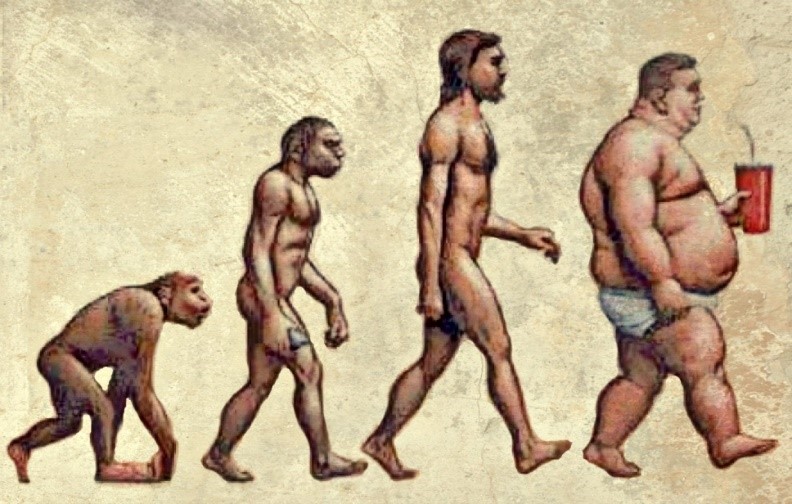News
June 1, 2016
By Nuritas
22 Spoonfuls of Sugar Make the Medicine Go Down – Pt 1

We are very happy to present the first part of a three-part series written by our very own Vincent Monahan. The series explores the interesting aspects of sugar in today’s food industry, with this first blog post taking a step into more primal aspects of sugar, touching on the evolutionary nature our sugar cravings and some physiology behind this.
A colossal 22 teaspoons per person per day is the average sugar intake in the U.S., four times the amount suggested as healthy by the World Health Organisation (WHO, 2014), translating to 35kg of sugar a year!
Sugar has become a mainstream topic of today’s public discourse, expanding beyond the evening cup of tea (“one spoon or two?”), to mass media and popular chat shows such as John Oliver’s ‘Last Week Tonight’. Impending changes to the current industry homeostasis are looming, with potential taxation of sugary drinks in the UK and the United States FDA planning to introduce “added sugar” to nutrition labels, now is an interesting time for sugar.
As the world’s third most valuable crop after cereals and rice, occupying 26,942,686 hectares of land across the globe (FAO, 2015) sugar holds a dominate position in global agriculture. It is central to the world’s economy and indeed cultural heritage, and has been estimated as being responsible for approximately 20% of the caloric content of modern diets (Cordain, 2005 ). It has been much debated that the main output — apart from commercial profits – is a global public health crisis, which has been centuries in the making.
Books have been written to collate, contrast and compare the extensive body of research linking sugar to associated health implications, the topic itself can be a mine-field of mixed opinions over the usual causation vs correlation debate depending on the opinion holder. Although the health aspects will be explored later in the series, this first post focuses on what drives the innate desire for sugar in the first place.

From an evolutionary point of view sugar has been described as a “deep, deep ancient craving” according to Prof. Daniel Lieberman, an evolutionary biologist at Harvard University. Sugar stimulates the “feel-good” chemical dopamine. This euphoric response makes sense from an evolutionary perspective, since our hunter-gatherer ancestors predisposed to “get hooked” on sugar probably had a better chance of survival. At a time when food was scarce and meals inconsistent, after all hunting is significantly less reliable than a drive-through, hanging on to fat was an advantage, not a health risk.
From a neurophysiological perspective these behaviors are then related to neurochemical changes in the brain, the same reward pathways associated with addictive drugs. Neural adaptations include changes in dopamine and opioid receptor binding, enkephalin mRNA expression and dopamine and acetylcholine release in the nucleus accumbens.
Prof Lieberman also points out that “For millions of years, our cravings and digestive systems were exquisitely balanced because sugar was rare,” (Lieberman, 2012) apart from honey, most of the foods our hunter-gatherer ancestors ate were no sweeter than a carrot.
All the food challenges our prehistoric ancestors faced mean that biologically, we have trained ourselves to crave sweets, the problem today is that humans have too much of the sweet stuff available to them. The invention of industrially farmed starchy crops, and readily available products high in refined carbohydrates, were non-existent and it wasn’t until very recently that technology made pure sugar bountiful.
Now that we can blame our sugar cravings on evolution let’s take a look at how sugar became such a big part of our daily diet. The next post takes a dive into the history of sugar in the food chain and how it has become ubiquitous in the Western diet.
References
Cordain. (2005). Origins and evolution of the Western diet: health implications for the 21st century.
FAO. (2015). FAOSTAT. Retrieved from http://faostat3.fao.org/download/Q/QC/E
Lieberman, D. (2012, June). Evolution’s Sweet Tooth. Retrieved from nytimes.com: http://www.nytimes.com/2012/06/06/opinion/evolutions-sweet- tooth.html?_r=1
The American Journal of Clinical Nutrition, 341-354.
WHO. (2014). Draft Guideline: Sugars intake for adults and children. Retrieved from http://www.who.int/nutrition/sugars_public_consultation/en/





 Previous
Previous
